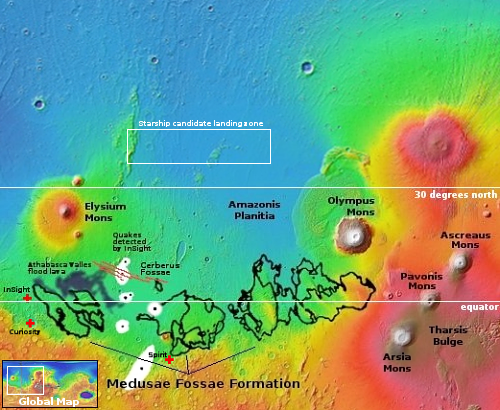April 8, 2024 Quick space links
Courtesy of BtB’s stringer Jay. This post is also an open thread. I welcome my readers to post any comments or additional links relating to any space issues, even if unrelated to the links below.
- Sierra Space developing heat shield system designed to return small payloads from space
They are doing drop tests now. The goal is to place orbital supplies in orbit that can be delivered precisely on command to soldiers on the ground.
- Chinese factory set to begin producing 1,000 satellites yearly
The satellites are likely intended to compete with Starlink.
- China building a launchpad at its Jinquan spaceport in northwest China for pseudo-commerical companies
Related tweet here. The obvious goal is to isolate the commercial rockets from the military ones, while maintaining a tight control over the pseudo-companies. The commercial pads being built in two places in China will be where they are required to launch from, and if they don’t do as told launch access will be denied.
Courtesy of BtB’s stringer Jay. This post is also an open thread. I welcome my readers to post any comments or additional links relating to any space issues, even if unrelated to the links below.
- Sierra Space developing heat shield system designed to return small payloads from space
They are doing drop tests now. The goal is to place orbital supplies in orbit that can be delivered precisely on command to soldiers on the ground.
- Chinese factory set to begin producing 1,000 satellites yearly
The satellites are likely intended to compete with Starlink.
- China building a launchpad at its Jinquan spaceport in northwest China for pseudo-commerical companies
Related tweet here. The obvious goal is to isolate the commercial rockets from the military ones, while maintaining a tight control over the pseudo-companies. The commercial pads being built in two places in China will be where they are required to launch from, and if they don’t do as told launch access will be denied.







